The cities buried by the eruption of Vesuvius in 79 A.D., Pompeiii, Herculaneum, Boscoreale, Stabiae and Oplontis, constitute a tragic account of the volcano’s devastating impact on the ancient cities of the Vesuvian region. The volcano erupted in an impetuous manner, generating a column of ash, gas and debris that rose for miles above the crater. During the initial phase of the eruption, cities were hit by a shower of lapilli and pumice, followed by high-temperature pyroclastic flows that flowed down the slopes of Vesuvius, overwhelming whatever they encountered in their path. Many people were trapped in buildings or affected by collapses caused by the weight of the volcanic materials, while others died from inhaling toxic gases or from heat shock caused by the high temperatures. Despite the devastation, however, the eruption also had a conservation effect as buried cities remained intact under the blanket of ash and lava for centuries, thus preserving an exceptional record of ancient Roman life.
Archaeological excavations conducted in the areas have unearthed roads, buildings, artifacts, and even human bodies, offering valuable insights into the daily life, culture, and art of the time. To date, the various archaeological parks in the buried cities, aUNESCO World Heritage Site, offer visitors the opportunity to immerse themselves in ancient Roman history. Pompeiii, with its vast archaeological site, features extraordinary public and residential structures, as well as a museum housing artifacts and works of art recovered from the excavations. Herculaneum, smaller but equally significant, offers a detailed view of daily life in the ancient city, with luxurious villas, well-preserved frescoes and artifacts of various kinds. Stabiae and Oplontis and Boscoreale, also offer important evidence of Roman art and culture, with villas, gardens and valuable artifacts. The parks allow visitors to immerse themselves in the life and history of the eruption, offering a unique view of an era long gone, but still alive thanks to the preserved remains of the cities buried by Vesuvius. So here is what you need to know before visiting the five archaeological parks.
In 79 AD, a roar interrupted the daily tranquility at the foot of Mount Vesuvius. Within hours, the volcano poured out a huge amount of pyroclastic material, radically changing the landscape of the entire Vesuvian area. During the first phase of the eruption on Pompeiii, those who had not left the city in time were trapped in buildings invaded by pumice and lapilli or were affected by collapses caused by the eruptive material, which accumulated to a height of about three meters. Subsequently, a high-temperature pyroclastic flow swept over Pompeiii at great speed, filling the spaces not yet invaded by volcanic materials and causing the instantaneous death by heat shock of those still in the city. Of these victims, only skeletons were found. Before it became an archaeological site, included in theUNESCO World Heritage Site, Pompeiii was a prosperous and densely populated city, with a history spanning nearly a millennium and characterized by the coexistence of different cultures. Today, its main forum is surrounded by majestic public buildings, such as the Capitolium, the Basilica and various temples, as well as being enhanced by public baths, two theaters and an amphitheater. However, Pompeiii is most renowned for its outstanding collection of residences, lined along well-paved streets. Among these, the Villa of the Mysteries emerges as one of the most significant monuments, taking its name from the extraordinary frescoes in the triclinium, depicting the initiation rites (the “mysteries”) of the cult of Dionysus. Another distinctive feature of Pompeiii is the numerous graffiti that adorns the walls of the city, offering a unique glimpse into the daily life and people who lived in this ancient Roman city.
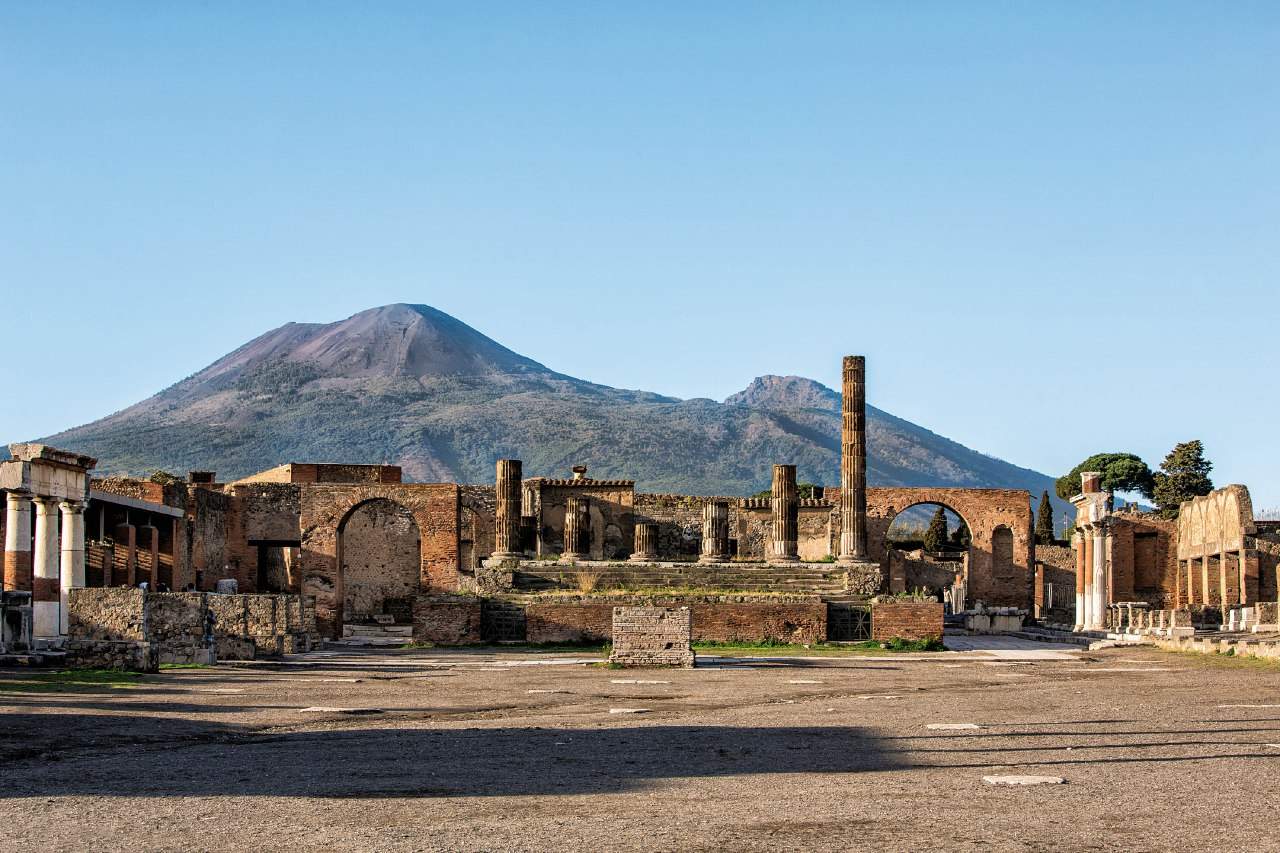
Since 1997, the archaeological area of Herculaneum has been included in theUNESCO list of world heritage sites along with the Pompeiii excavations and the villas of Oplontis. This makes the city an integral part of the UNESCO site known as the “Archaeological Areas of Pompeiii, Herculaneum and Torre Annunziata.” In 1738, at the behest of the King of Naples Charles of Bourbon, the first systematic explorations of Herculaneum’s subsoil began. The hardness of the volcanic mud and the difficulty of digging underground tunnels caused the enterprise to be abandoned after a few decades, and it was not until 1927 that the new excavations of Herculaneum, directed by Amedeo Maiuri, began. Thanks to the research much of the area that today constitutes the archaeological park was cleared, restored and opened to the public. In the 1980s, the remains of more than three hundred fugitives were found along the ancient shoreline of Herculaneum, under the arches opening onto the beach. On the night of the eruption, they abandoned their homes hoping for rescue by sea. Among the most poignant discoveries was the body of a young pregnant woman with the remains of an eight-month-old unborn child. Another woman, richly adorned with jewelry, was dubbed the “Lady of Jewels” by the press of the time. The most significant discovery, however, occurred on August 3, 1982, when emerging from the volcanic mud in front of the Suburban Baths, the keel of a boat overturned by the eruption was found. Over nine meters long, it resembled a modern gozzo, with three pairs of rowers and a helmsman. According to the most recent interpretations, it may have been a military lance from Pliny the Elder’s fleet, which set out from Misenum to rescue the threatened city. This suggestive theory is supported by the discovery near the boat of the skeleton of an officer with a belt, sword and dagger.
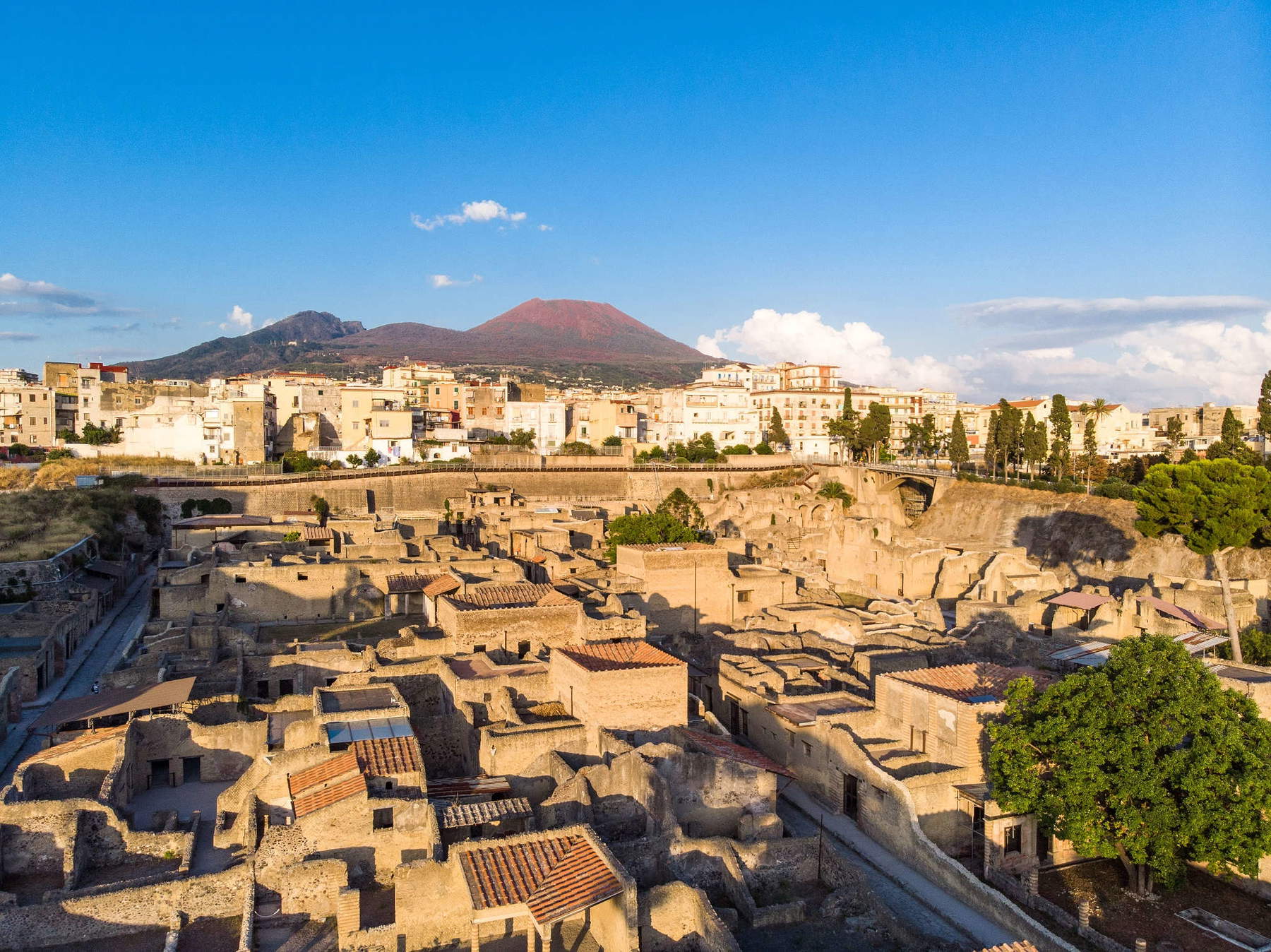
Boscoreale, located north of Pompeiii at the foot of Mount Vesuvius, may correspond to the Pagus Augustus Felix Suburbanus. This area, fertile since prehistoric times, evidenced by the Fossakultur tombs, was re-inhabited after the eruption of 79 AD, as evidenced by the Baths of Via Casone Grotta dating from the 2nd-3rd centuries AD. During Roman times, it was dotted with villas and farms devoted to the cultivation of vines, olives and cereals. In the last decades of the nineteenth century and the early twentieth century, numerous archaeological excavations were conducted in the northern suburbs of Pompeiii, mainly by private landowners. These excavations aimed mainly to recover wall and floor decorations and valuable objects, many of which ended up in the collections of various museums such as the National Museum in Naples, the Louvre in Paris, and the Metropolitan Museum in New York, or in private collections. Excavations revealed a series of about thirty rustic villas, which were part of a dense network of productive settlements operating in the first century AD on the slopes of Vesuvius and the nearby Sarno River plain. The settlements ranged from small and medium-sized family-run or slave farms to larger complexes with luxurious residential sectors for the owners and areas dedicated to production and labor. Thanks to the excellent conditions of preservation of structures and objects due to the eruption of 79 A.D., the excavation data have allowed us to understand the different stages of processing of the main agricultural products of the Vesuvian area, particularly wine, also intended for export, and oil, mainly for local consumption.
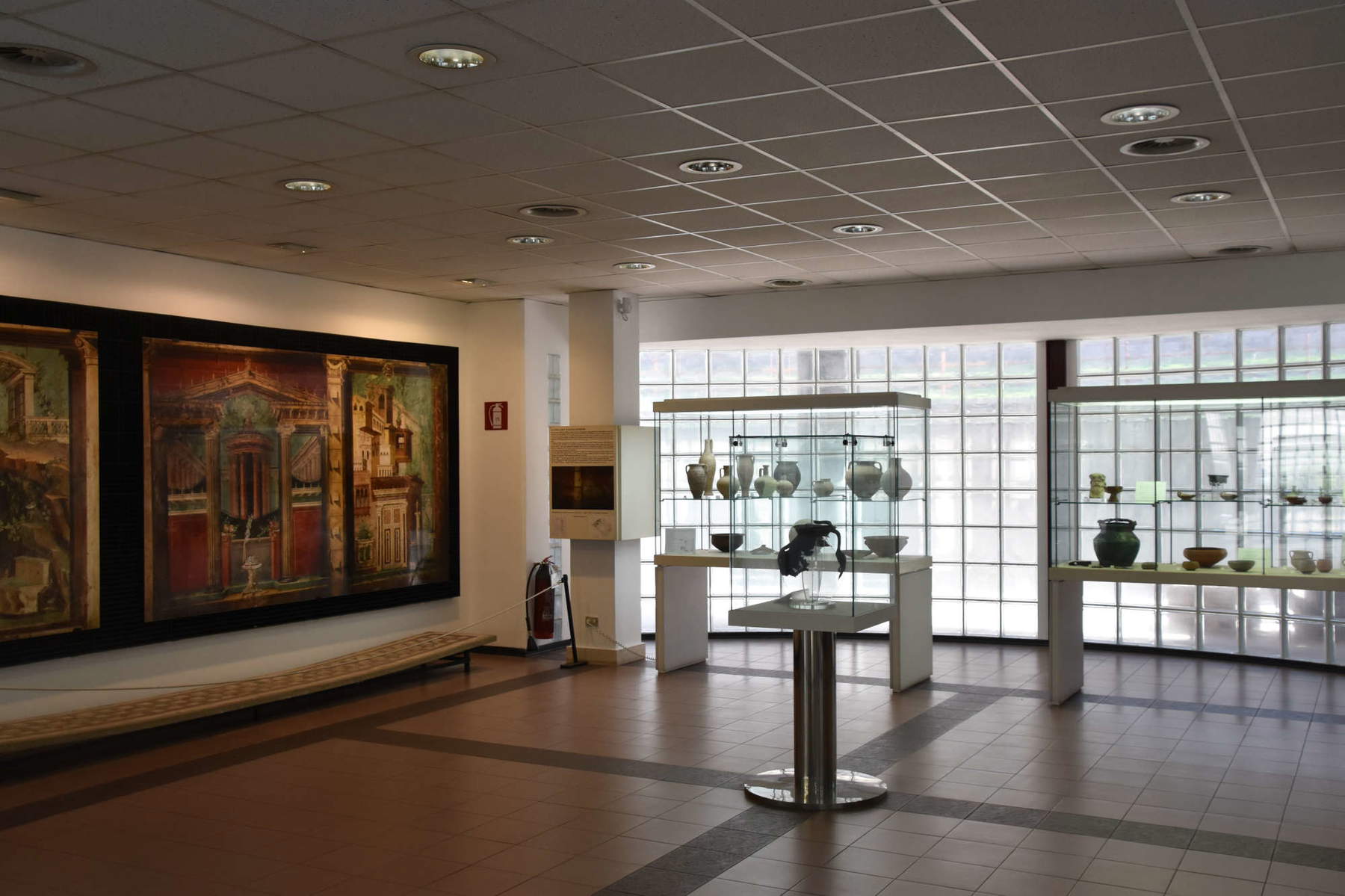
Stabiae has played both a strategic and commercial role since the Archaic period, around the 8th century BCE. Its heyday came between the devastating incursion of Sulla in 89 BC and the eruption of Vesuvius in 79 AD. During this phase, numerous villas with panoramic views sprang up on the northern slope of the Varano hill, mainly intended for residence: these dwellings included vast housing complexes, baths, porticoes and richly decorated nymphaea. Prominent among these were the Villa San Marco, one of the most impressive Roman residences, and the Villa Arianna, the oldest, known for its mythological frescoes. Excavations at Stabiae began on June 7, 1749, at the behest of Charles III of Bourbon, who had an urban complex with stores and streets and as well as six residential villas analyzed on the edge of the Varano plateau. The approach to excavation involved the use of burrows, with material not deemed significant being reburied or abandoned. The excavation, conducted by Alcubierre and Weber, first involved the Villa San Marco, followed by other residences. Then after a hiatus of about thirteen years, excavations resumed in 1775, focusing on the Villa Ariadne and surrounding rural areas. The work conducted by the Bourbon excavators was extensively documented and published in 1881 by M. Ruggiero, a collaborator of Fiorelli, then director of the Pompeiii excavations. In the 1950s, interest in the Stabiae site resumed, with the final excavation of the villas by L. D’Orsi. In the past for conservation reasons many frescoes were detached from the structures and housed in the Antiquarium, opened in 1957.
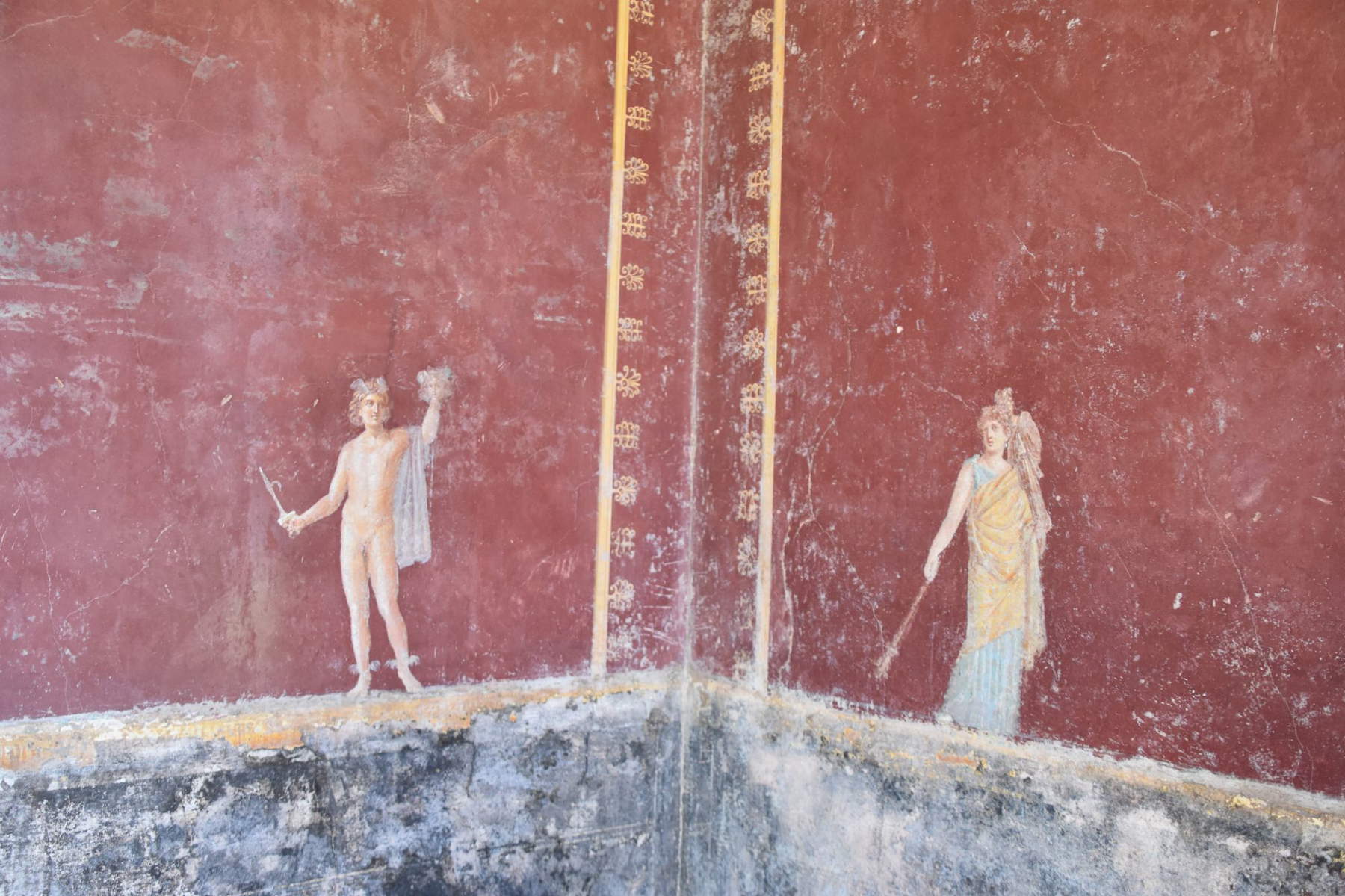
Among the Vesuvian localities buried by the 79 AD eruption, Oplontis stands out for its monumental evidence of the Pompeiian suburbs. Located in modern Torre Annunziata, it houses a peripheral urban center that was part of the administration of Pompeiii. Oplontis features two important buildings: Villa A, known as the Villa of Poppea, a sumptuous residence, and Villa B, by L. Crassius Tertius, not yet open to the public, a farm specializing in wine and oil production. In the heart of Torre Annunziata are impressive archaeological remains belonging to ancient Oplontis, mentioned only in the Tabula Peutingeriana, a medieval map of the roads of the Roman Empire, connected to Pompeiii and Herculaneum. Since 1997, the excavations of Oplontis have been included in UNESCO’s list of World Heritage Sites. These excavations include significant parts of buildings that were located on the western outskirts of Pompeiii. The residential Villa, dating from the 1st century B.C. and expanded during the imperial age, is the main monument that can be visited.
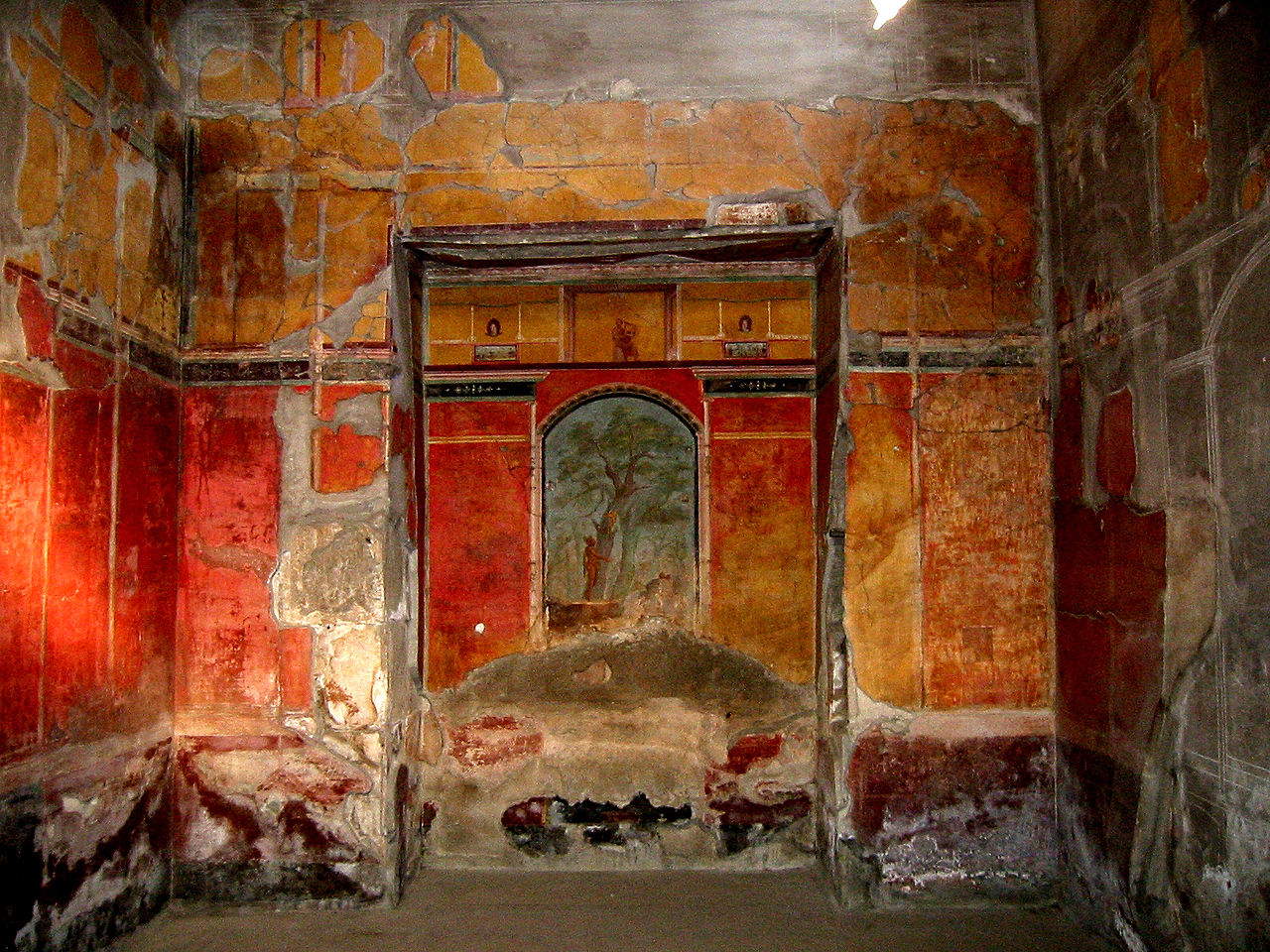
 |
| The cities of Vesuvius: the five sites to see in and around Pompeii |
Warning: the translation into English of the original Italian article was created using automatic tools. We undertake to review all articles, but we do not guarantee the total absence of inaccuracies in the translation due to the program. You can find the original by clicking on the ITA button. If you find any mistake,please contact us.